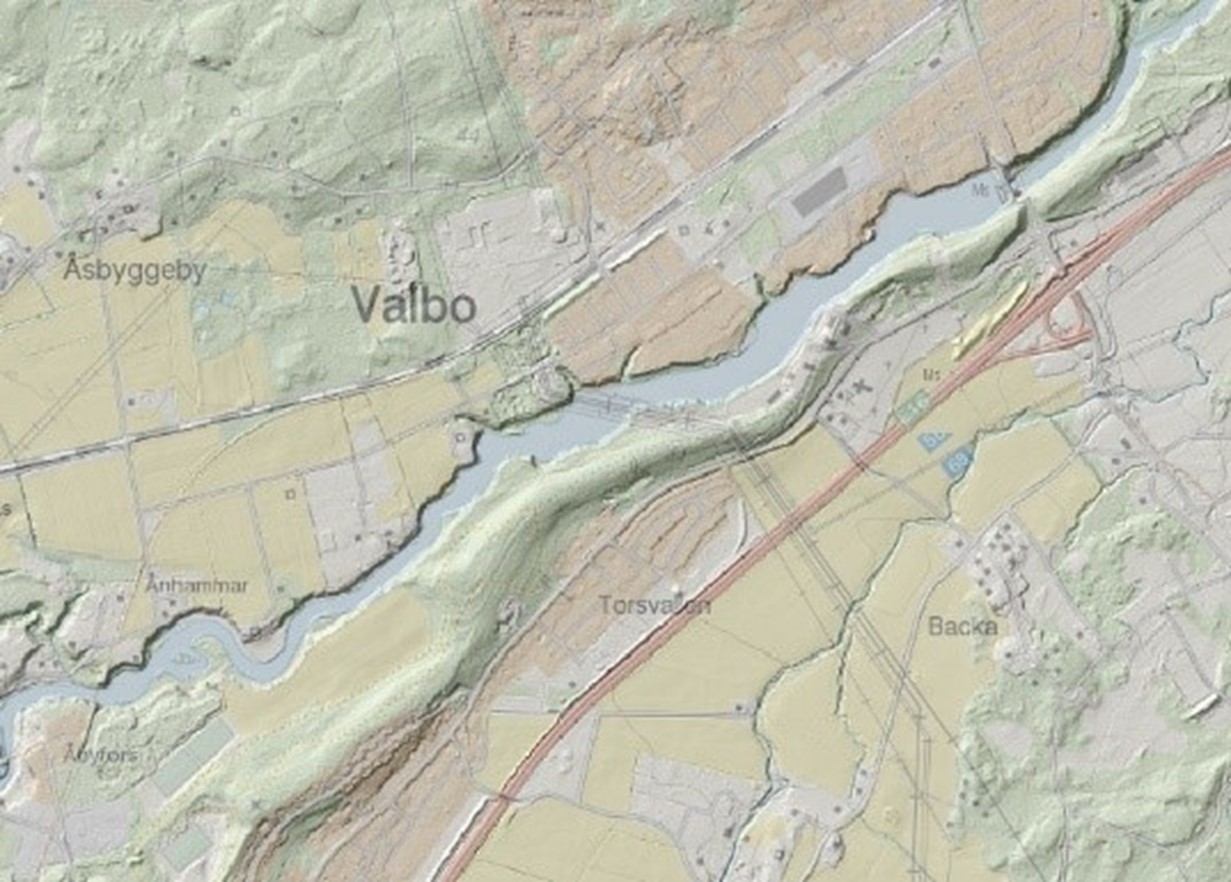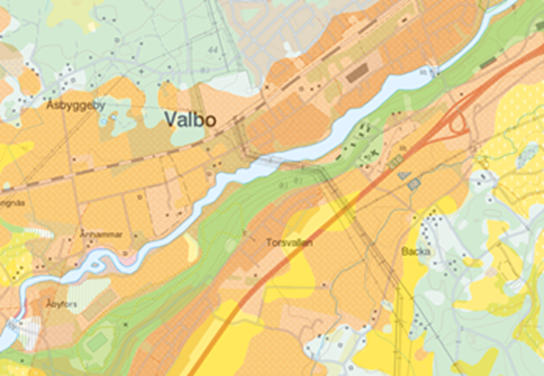Contents of this page may be automatically translated, we take no responsibility for the accuracy of the translation. Feel free to contact our customer support centre if you have any questions.

Find out how eskers were formed using source material and Geoskolan's mapping tool. Discuss the significance of eskers for people and society. This lesson is designed for grades 7-9 in primary school.
Use our services
Part 1 - Knowledge Acquisition
Find out:
- What is an esker?
- How are eskers formed?
- What are they composed of?
- Give some examples of eskers.
- Is there an esker near your location?
To assist you, you have source materials and the mapping tool. Use the map layer: Höjdmodell-terrängskuggning to locate the esker on the map.
Source material:
- Melting Ice - SGU-Swedish Geological Survey (in Swedish, new window)
- Glaciofluvial Sediments - Traces of Glaciofluvial Processes - SGU, Swedish Geological Survey (in Swedish, new window)
- Ice Age - "Kunskapsbanken", SMHI, Swedish Meteorological and Hydrological Institute (in Swedish, new window)
Part 2 - Investigate and describe the landscape
What types of soils are found in and around eskers?
Combine the map layer “Jordartskarta” and “Höjdmodell-terrängskuggning“ in the mapping tool to locate the esker on the map. The layers can be made transparent to better observe the details of each layer.
Source material:
- Glaciofluvial Sediments - Traces of Glaciofluvial Processes: SGU, Swedish Geological Survey (in Swedish, new window)
- Land Uplift - From Seabed to Clay Plain: SGU, Swedish Geological Survey (in Swedish, new window)
Here are some tips to present your findings using the drawing and text tools in Geoskolan's mapping tool and save the result as a PDF file:
- Use the drawing tool to mark the location of the esker on the map.
- Use the text tool to label the esker and provide a brief description.
- Utilize the drawing tool to highlight the surrounding area and indicate the different soil types found in and around the esker.
- Use the text tool to provide a description of the soil types and their characteristics.
- Ensure that your annotations and labels are clear and easily readable.
- Once you have completed your annotations and descriptions, save the map as a PDF file using the tool's save or export functionality.
By following these steps, you can effectively present your results and save them as a PDF file for future reference or sharing.
Part 3 - Analyze and explain the landscape
In this step, it is appropriate to combine the map layer “jordartskarta” and “höjdmodell-terrängskuggning” in the mapping application as in task 2.
Why are cultivated landscapes common in the area around the esker?
Source material:
- Land Uplift - From Seabed to Clay Plain: SGU, Swedish Geological Survey (in Swedish, new window)
- Glacial Fine-Grained Sediments: SGU, Swedish Geological Survey (in Swedish, new window)
By analyzing the combined layers and referring to the provided source materials, you can explain why cultivated landscapes are common in the area around the esker.
Part 4 - Analysis and discussion
In what ways, apart from agricultural landscapes, do we benefit from eskers in society? For example, in terms of commercial activities, economic benefits, environmental benefits, social benefits, etc.
Use your knowledge of eskers and their surroundings to discuss the benefits of eskers in society.
Eskers offer several advantages in society beyond their agricultural significance. Some potential benefits include:
- Commercial Activities: Eskers often contain valuable mineral resources such as sand, gravel, and stones. These materials can be extracted and used in construction projects, road building, and various industries, contributing to economic growth and employment opportunities.
- Water Management: Eskers can serve as natural aquifers, storing and supplying groundwater. This resource is crucial for human consumption, agriculture, and industrial purposes. Proper management and protection of eskers ensure a sustainable water supply.
- Biodiversity and Habitat: Eskers can support diverse ecosystems, providing habitats for various plant and animal species. Preserving and restoring these natural environments contribute to biodiversity conservation and promote ecological balance.
- Recreational Value: Eskers often offer scenic landscapes and opportunities for outdoor activities such as hiking, biking, and wildlife observation. They can become recreational areas that promote physical and mental well-being for local residents and attract tourists, boosting the local economy.
- Cultural and Educational Importance: Eskers hold geological and historical significance, representing remnants of past glacial periods. They can be used as educational resources, allowing people to learn about Earth's geological history and the impacts of ice ages on landscapes.
By considering these aspects, you can engage in a comprehensive discussion on the multiple benefits that eskers bring to society beyond their agricultural value.



